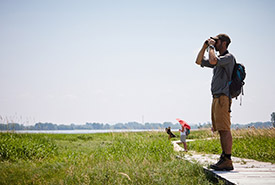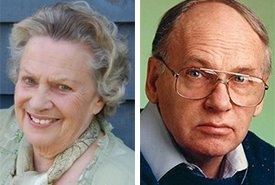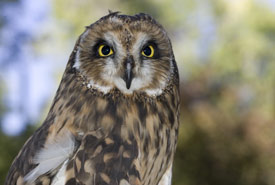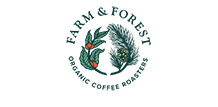Hochelaga Archipelago - East of Montreal

Île aux Cerfeuils, Hochelaga Archipelago (Photo by Martin Beaulieu)
The Hochelaga Archipelago includes over 300 islands and islets, stretching from the Ottawa River (Lac des Deux-Montagnes) to the eastern tip of the Island of Montreal (St. Lawrence River).
The Nature Conservancy of Canada (NCC) protects several of these islands. Since acquiring Île aux Moutons (Varennes) on the St. Lawrence River in 1978 — our first project in Quebec — we have been working with our partners to protect the natural environments of a growing number of islands and riparian zones along the St. Lawrence River.
NCC islands open to the public
Four of the islands protected by NCC, at the eastern end of Montreal, are now open to the public: Île Bonfoin (the Rivière-des-Prairies-Pointe-aux-Trembles borough on the island of Montreal), Île à l'Aigle, Île aux Cerfeuils (Repentigny) and Île Beauregard (Verchères). These islands are now part of NCC's Nature Destinations network or properties, which invites the public to take a journey through some of the greatest examples of our country’s natural areas.
 Click on the image to enlarge (French only)
Click on the image to enlarge (French only)
Visit the islands by kayak, canoe or other non-motorized watercraft. Hiking trails, observation platforms and interpretive panels await your arrival. NCC is responding to the growing enthusiasm for recreation and tourism on the St. Lawrence River, while protecting the archipelago through conservation activities. NCC now protects nearly 235 hectares (580 acres) on these islands, four of which are now accessible to the general public.
Learn more in this CBC interview with Catherine Lefebvre, project manager:
Pioneers of nature conservation in Quebec
Louise Beaubien Lepage and Anthony “Tony” Le Sauteur

Louise Beaubien Lepage and Tony Le Sauteur
“A pioneer of conservation in Quebec, the late Louise Beaubien Lepage was promoting the importance of protecting the province's lakes, rivers, wetlands and forests as early as the 1970s. In particular, she mobilized several generations of citizens by founding the Fédération des associations pour la protection de l'environnement des lacs and supported NCC as an ardent volunteer for 25 years, in addition to serving for many years on its regional board.
“Like Beaubien Lepage, the late Anthony Le Sauteur was one of the instigators of the nature conservation movement in Quebec. He carried out many conservation projects during the 70s and 80s, and thereafter, notably within the Lakes Program, which focused on citizen participation.
“Driven by their shared passion for environmental protection, Ms. Beaubien Lepage and Mr. Le Sauteur set up the ‘Un fleuve, un parc’ (‘One River, One Park’) project, which was, and still is, aimed at protecting the natural environments of the islands and shores of the St. Lawrence River – a mission that is also shared by the organization Bird Protection Quebec (BPQ).
“Thank you to this great lady and this great man of nature. Thank you also to BPQ for helping to implement their vision.” – Robert Carswell, former chairman of the board for NCC and Bird Protection Quebec
Bird Protection Quebec
Founded in 1917, Bird Protection Quebec (BPQ – Protection des oiseaux du Québec) is one of the oldest conservation charities in Canada. Its mission and vision are clear: to work for all birds, especially those in Quebec.
Not only does BPQ protect birds, it is also actively involved in public education. In addition to managing and maintaining several bird sanctuaries, the organization sponsors numerous scientific research and ornithological education programs. It also secures land for ornithological reserves, often in collaboration with other conservation organizations. It is able to finance its projects thanks to its annual subscriptions and regular donations.

Protecting the St. Lawrence islands
NCC's work in Quebec began with the far-reaching vision of the frontrunners of conservation. NCC first collaborated with the Canadian Wildlife Service of the Government of Canada and Ducks Unlimited Canada, then the Fondation de la faune du Québec and the Government of Quebec, all of which are members of the Eastern Habitat Joint Venture of the Migratory Birds Convention with the U.S. federal government. NCC then intervened to acquire private island properties. To date, of the 50 or so islands conserved on the river, NCC owns 17 along a 90-kilometre stretch between Montreal and Lac Saint-Pierre, near Trois-Rivières.
After the acquisition of Île aux Moutons, others followed, including Île aux Asperges (Varennes), Île de la Traverse (Saint-Ignace-de-Loyola), Île à la Perche (Saint-François-du-Lac) and Île à la Pierre (Sainte-Anne-de-Sorel), as well as several properties on Île de Grâce (Sainte-Anne-de-Sorel). Further west, NCC also acquired the Lachine Rapids islands, creating the Réserve naturelle des Îles des Rapides-de-Lachine, home to one of the largest heronries in America.
Rich in wetlands, the islands are home to a great diversity of wildlife and plant species. Large birds of prey, such as the short-eared owl, can be seen here, as can the miniature sedge wren. Other little-known animals can be discovered, such as turtles or copper redhorse, an endangered species in Canada that is found only in the waterways of southwest Quebec. Copper redhorse frequents the aquatic grass beds that surround the islands. These natural plant environments, where fish spawn and their fry (very young fish) grow, are also home to a variety of species that use them to rest, feed and hide from predators.
Discover the turtles of the Hochelaga Archipelago
Discover birds of prey of the St. Lawrence River

Short-eared owl (Photo by Gregory Johnston)
The ecosystems of the islands in the Hochelaga archipelago, which provide excellent habitat for birds, are the result of the transformation of woodlands into farmland in the past.
Making these islands accessible to the public helps NCC connect more people to nature. NCC continues to honour Louise Beaubien Lepage and Tony Le Sauteur’s forward-thinking vision, their memory and their immense legacy in protecting the St. Lawrence.
A promising future
By continuing to acquire ecologically valuable islands along the St. Lawrence and making them accessible to the public, NCC is advancing the work and vision of these two passionate defenders of the environment. Louise and Tony’s inexhaustible energy, convictions and determination enabled the conservation of natural environments to flourish in Quebec. They have been and will remain a great source of inspiration.
Thank you to the donors and partners who contributed to the development of the accessible islands of the Hochelaga Archiplago
- Bird Protection Quebec
- Canada 150 Community Infrastructure Program (Economic Development Canada)
- Canada Summer Jobs
- Canards Illimités
- Comité ZIP des Seigneuries
- Comité ZIP Jacques Cartier
- Community Interaction Program (Environment and Climate Change Canada)
- Fédération québécoise du canot et du kayak
- FloraQuébé.ca
- Fondation de la faune du Québec
- Fondation Hydro-Québec pour l’environnement
- Government of Canada
- Government of Québec
- Mountain Equipment Co-op
- Municipalité de Saint-Sulpice
- Municipalité de Verchères
- Projet Ensemble pour la nature (ministère du Développement durable, de l’Environnement et de la Lutte contre les changements climatiques du Québec)
- Quebec Marine Association
- Regroupement QuébecOiseaux
- SC Johnson
- Social Development Canada
- Table de concertation régionale du Haut-Saint-Laurent - Grand Montréal
- U.S. Fish and Wildlife Service
- Ville de Montréal, Arrondissement Rivière-des-Prairies-Pointe-aux-Trembles
- Ville de Montréal, Service des grands parcs, du verdissement et du Mont-Royal
- Ville de Repentigny
- Ville de Varennes




